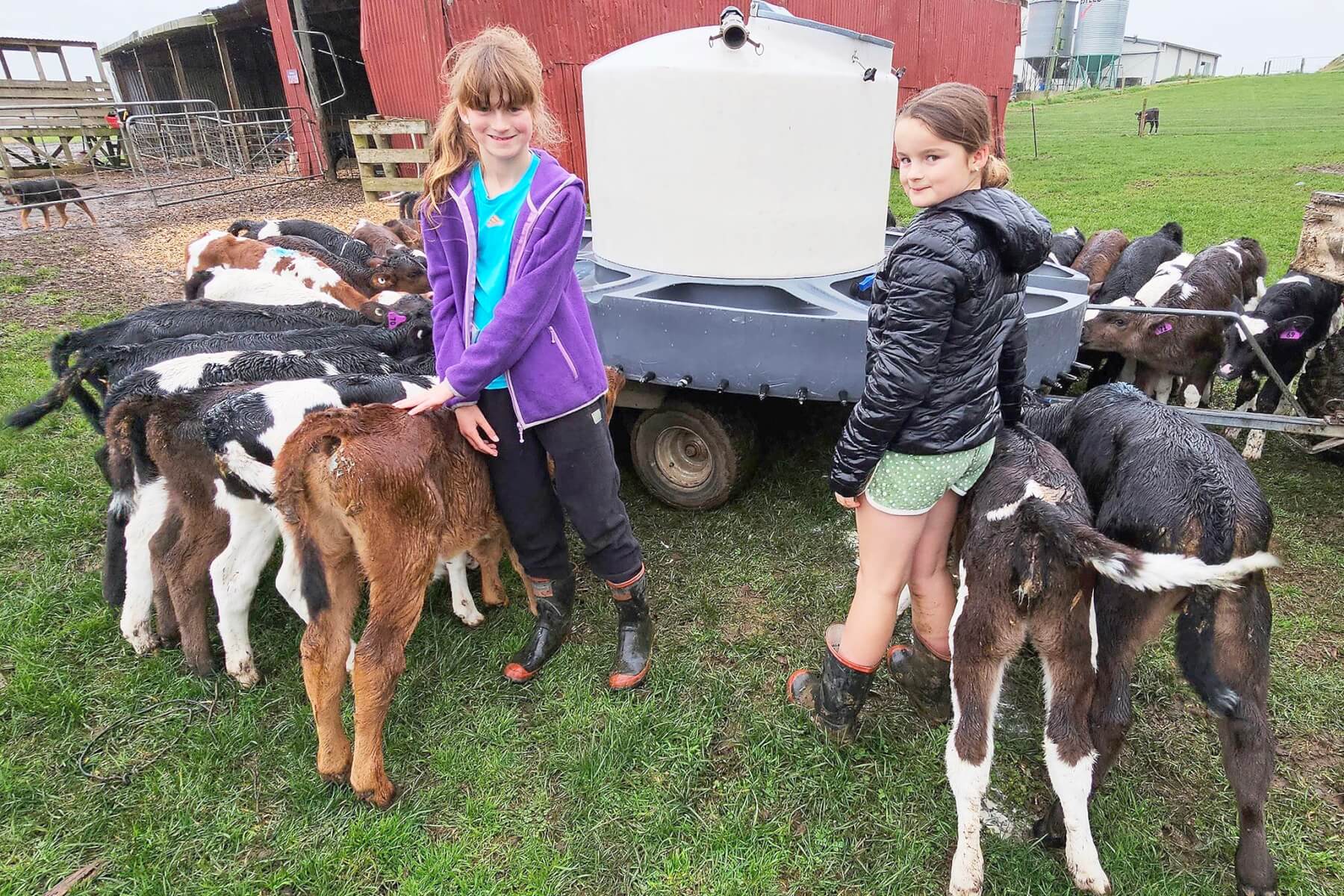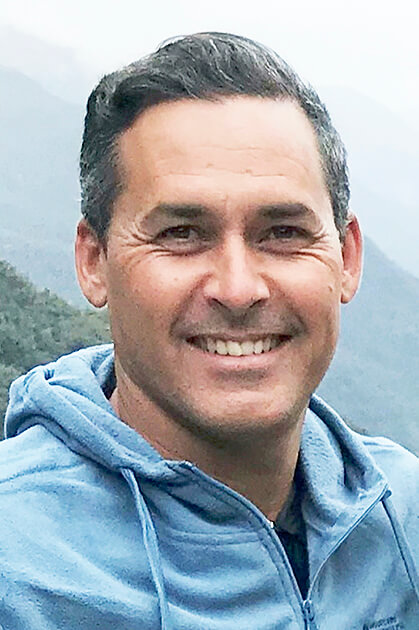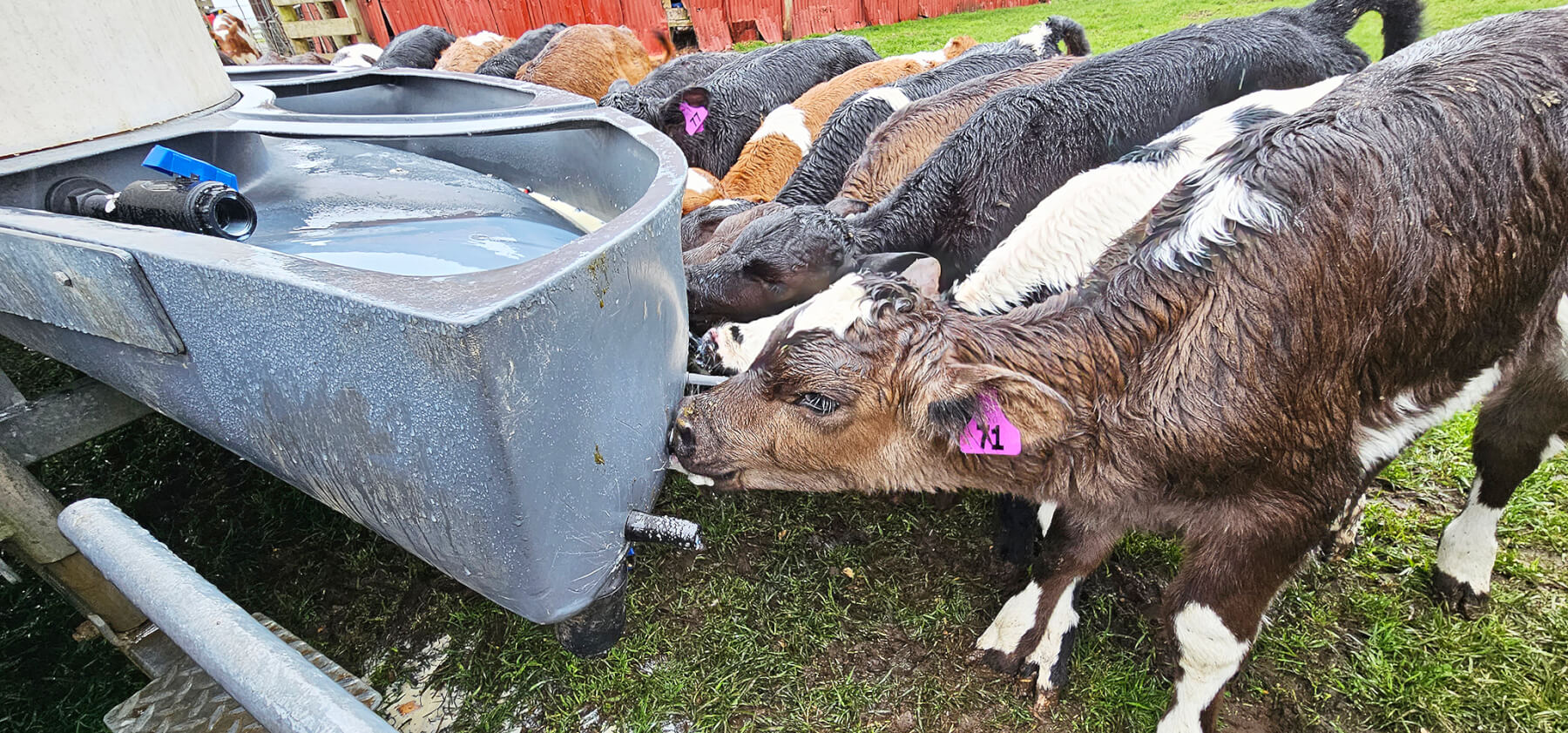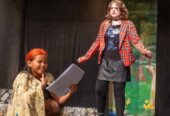
Helping out: Caitlin, 9, and Sophie, 10, Germann of Ōhaupō help out their neighbours the Reymers by feeding the calves. In return the two girls get a calf which they spoil for Ōhaupō School’s annual calf day. Calves they showed at calf day in the past have gone on to excel in the milking stakes adding to the long-held theory “pampered calves produce lots of milk.” Photo: Mary Anne Gill.

Matt Hoskin
“I’ve been farming for nearly 30 years and can’t remember a season that’s been so wet for so long, particularly over summer.”
Amongst at times “astronomical rainfall and the tough challenges” that’s brought with it, Karapiro farm owner and Fonterra supplier Matt Hoskin says he’s determined to focus on the positives.
“Given the contour of our property, we’re fortunate that we can handle quite large amounts of rain.
“What it does mean is that pasture management – and minimising pasture damage – becomes a key consideration.
“In our case, I’d say we’re a little short of grass cover at the moment. The ground’s just been so wet for so long.”
Now about “75 percent” of the way through calving 320 cows on the property – H & H Karapiro – he runs alongside his wife Naomi, Hoskin told The News on Tuesday they recorded record production figures last season.
They have farmed the nearly 100 effective hectare property for nine years and have been putting in up to 80-hour weeks since calving started in July – and milking twice a day. They won’t be finished calving until mid-September.
So, Fonterra’s “massive pay cut” during such a busy time came as a “bit of a kick in the teeth”.
“In the midst of calving, that’s been hard to swallow, honestly,” Hoskin said. “It’s a big hit, yes, but I’ve been farming for nearly 30 years, and I’ve seen the payout go up and down like this before.”
Both Waipā Fonterra dairy factories at Hautapu and Te Awamutu employ about 300 people and during peak season they each produce about three million litres of milk – and one million of cream – every day.
Fonterra Te Awamutu operations manager Russell Muir told The News the site has a “long processing year”.
“We process winter milk at Te Awamutu, so that mean operate 50 weeks per year.”
Off the back of their record figures last year, Hoskin said it’s too early to tell what the combination of the prolonged wet weather, coupled with the reduced payout, will ultimately do to his bottom line.
He is grateful to be able to use supplementary feed left over from last summer.
“A lot of other farmers would be in the same boat because the summer was so wet. There’s no doubt it’s been hard work at times. But that hard work does pay off.
“Every year when we get to the end of calving, I do look back and think how did we get through that?”

The calving season is well underway in Waipā.









